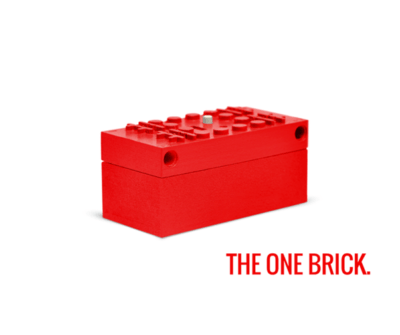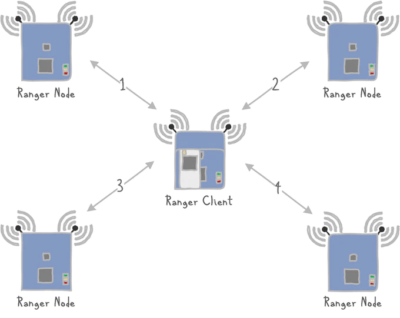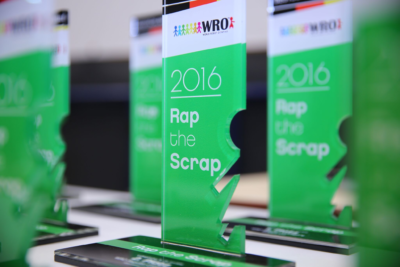RoboCupMajor
b-it-bots, Hochschule Bonn-Rhein-Sieg, Sankt Augustin, Germany
Liga: RoboCup@Home und RoboCup@Work
“We have participated in RoboCup since 2012. “After first competing in RoboCup@Home, we added RoboCup@Work to our list of competitions in 2012. With our 16 team colleagues – all of whom are studying Autonomous Systems – we take on the RoboCup challenge every year. In 2009, we were the RoboCup@Home world champion, and won second place in RoboCup@Work in 2014. What is so special about this event: Our team members are from all corners of the globe, including Mexico, India, Congo, Ukraine, Pakistan, Canada and Vietnam, and we all practice the idea of RoboCup. We look forward to an inspiring environment with the opposing teams, some of which are also close friends.”www.b-it-bots.de
Nao-Team, Hochschule für Technik, Wirtschaft und Kultur, Leipzig, Germany
Liga: RoboCup Standard Platform League
“Our team consists of 17 informatics students. We have been enthusiastic participants of RoboCup for years, and look forward to welcoming the competition to Leipzig this year. At RoboCup, we use innovation and creative software to push hardware to its limits – something that motivates us every year.” http://htwk-robots.de
Tech United Eindhoven, Eindhoven University, Eindhoven, Netherlands
Liga: Soccer, Midlle Size League
“We have been coming to RoboCup since 2005 – with much success. In the Middle Size league, we have always reached the finals in the past few years, and even won the coveted trophy in 2012 and 2014. What is so special about RoboCup? Despite its competitive character, everyone is working on the same goal – to promote research in robotics. The community spirit is really noticeable!” www.facebook.com/techunited
UT Austin Villa, University of Texas, Austin, USA
Liga: Soccer, 3D Simulation League
“We have competed at RoboCup for more than ten years. Participating in different RoboCup leagues since 2003, we won the 3D Simulation League title four times in the past five years. 3D simulation unites robotics, multiagent systems and artificial intelligence – something that really motivates us. RoboCup is an excellent opportunity to meet up with friends and colleagues and talk about the newest results, share ideas and test the latest advances.”
http://www.cs.utexas.edu/~AustinVilla/sim/3dsimulation/
WrightEagles, University of Science and Technology of China, Hefei, China
Liga: RoboCup@Home
“We were the first Chinese team to compete at RoboCup in 2009. We now have 15 students who have been competing for the top spots in the RoboCup@Home league for several years, and we won the title in 2014. What we find exciting about RoboCup? During the event, members have an opportunity to advance their technologies and test their inventions in real life. At the end, what counts is not only the ranking, but the insights that have been gained.”http://wrighteagle.org/en/robocup/atHome/
Bit-Bots, Universität Hamburg, Hamburg, Germany
Liga: Soccer, Humanoid KidSize
“We have competed in RoboCup’s Humanoid KidSize league since 2012. Our team consists of 17 members. We have already been able to reach the top spots at the RoboCup German Open and IranOpen several times. RoboCup is a wonderful opportunity for gaining practical experience as part of our academic course of studies. We are very excited to discuss the newest robots with the other teams in Leipzig.” www.bit-bots.de
Solidus, Höhere Fachschule für Technik, Mitteland, Switzerland
Liga: RoboCup Logistics
“We started competing at RoboCup in 2010. Last year, our nine-member team garnered the second place. For us, RoboCup is the ideal setting for networking, exchanging ideas and expanding our social and technical competence.”https://www.facebook.com/hftmrobotics
Hector, Technische Universität Darmstadt, Darmstadt, Germany
Liga: RoboCup Rescue
“We have participated in the RoboCupRescue league since 2009. The objective of this league is to search for buried victims in simulated disaster scenarios – an exciting task, since these technologies are supposed to be used in real life very soon. Our autonomous rescue robots already achieved some success in this area, and we have won the “Best in Class Autonomy” award in every one of the last four years. In 2014, we were the first team with a focus on autonomy that won the world championship title in Brazil. Therefore we will work hard to again achieve a top ranking in the “home game” in Leipzig. We are excited about RoboCup because it gives us an opportunity to test our robots at a world class level. The intensive exchange with the other teams is another exciting aspect of the world championships.“www.teamhector.de
RoboCupJunior
FRT – FIRST RoboCup, Alexander von Humboldt Gymnasium, Berlin, Germany
Liga: Soccer
“Our team was created in 2006, and has competed at many robotics world championships in the RoboCupJunior Soccer leagues. This year, we became the German champion, and are of course looking forward to Leipzig. Our team is characterized by its passion and friendships. We look forward to exciting days!“ www.frtrobotik.de
RoboCup at a glance
Participants: approx. 3,500 from 45 countries
Junior participants: 1,155
Major participants: 1,540
Volunteers: 248
Amazon Picking Challenge: 100 participants
RoboCamp: 160 participants
Representatives of the RoboCup Community: approx. 300 participants
Home geographical regions Egypt, Argentina, Australia, Belgium, Brazil
of the participants: Chile, China, Germany, Ivory Coast, Estonia, France, United Kingdom, India, Indonesia, Iran, Ireland, Israel, Italy, Japan, Canada, Columbia, Croatia, Macau, Mexico, Netherlands, Austria, Pakistan, Panama, Portugal, Romania, Russia, Switzerland, Sweden, Singapore, Slovakia, Slovenia, Spain, South Korea, Taiwan, Thailand, Turkey, Hungary, Uruguay, USA
Geographical regions with Germany (620), Iran (356), China (227), Japan (230),
the most participants: USA (162)
Participants who have travelled University of New South Wales, Sydney
the longest way: (Air-line distance: 16,195.25 km)
About RoboCup
RoboCup is the leading and most diverse competition for intelligent robots, and one of the world’s most important technology events in research and training. The World Cup of robots combines a variety of interdisciplinary problems from robotics, artificial intelligence, informatics, as well as electrical and mechanical engineering, among others. As the central discipline, robots play soccer in different leagues. Additional visionary application disciplines, such as intelligent robots as assistants for rescue missions, in households and in industrial production have been added during the last few years. The vision of the RoboCup Federation: That autonomous humanoid robots beat the reigning soccer world champion in 2050. The 20th RoboCup will be held in Leipzig from 30 June to 4 July 2016. More than 500 teams from 40 countries with 3,500 participants are expected to compete at this event. In addition to the Global Sponsors of the RoboCup (SoftBank Robotics, Festo, Flower Robotics, MathWorks), the 2016 world championships are also supported by Siemens (Gold Sponsor), Amazon Robotics, Festo, KUKA (Silver Sponsors), Schenker, TUXEDO Computers (Hardware Partners), HARTING, Arbeitgeberverband Gesamtmetall / think ING, S&P Sahlmann (Bronze Sponsors), DHL (Logistics Partner) as well as arvato, Donaubauer, Flughafen Leipzig/Halle, Metropolregion Mitteldeutschland and Micro-Epsilon (Friends).



 Interview
Interview
